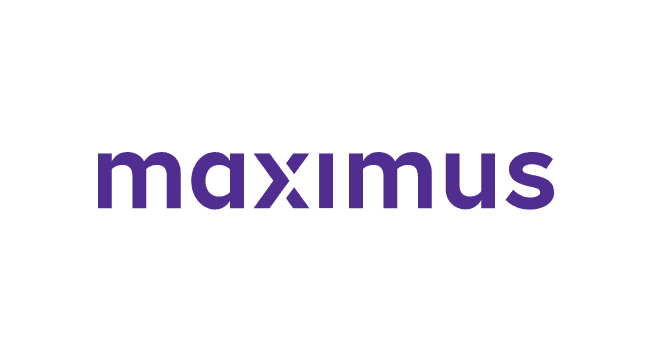As a leading strategic partner to governments across the globe, Maximus helps improve the delivery of public services amid complex technology, health, economic, environmental, and social challenges. With a deep understanding of program service delivery, acute insights that achieve operational excellence, and an extensive awareness of the needs of the people being served, our employees advance the critical missions of our partners. Maximus delivers innovative business process management, impactful consulting services, and technology solutions that provide improved outcomes for the public and higher levels of productivity and efficiency of government-sponsored programs.


3x
Reduction in total cost of ownership (TCO) compared to incumbent and hyperconverged solutions
6x
Faster data restoration with the Druva Security Cloud
1,000+
Compute and database instances protected 24×7 on- premises and after migration to AWS cloud
About Maximus
The Challenge
As one of the largest digital services providers to the government, Maximus is always looking for ways to accelerate its own digital journey. In 2018, the CEO and CIO announced the company’s cloud-first initiative and to migrate all project’s on-prem infrastructure to AWS cloud in three years.
Due to cloud-first initiative and on-prem backup solutions licenses expiring soon, Maximus IT-EDP (Enterprise Data Protection) team had four months to modernize the backup infrastructure and reduce the data center footprint by migrating workloads to the cloud. At the time, the IT team used IBM Tivoli Storage Manager and Veritas NetBackup to protect on-premises file servers and databases.
With the existing solution, IT spent considerable time and effort to manage and organize tapes as they came out of the Veritas NetBackup cluster before shipping them offsite for long-term retention (seven yrs). Additionally, Veritas NetBackup didn’t have granular access control. It was either all permissions, or none. This prohibited IT from enabling individual project function teams to do their own backups.
Maximus wanted a data resilience solution that:
- Was cloud-native so that the company could accelerate its journey to the cloud and free IT from managing and maintaining on-premises hardware and software.
- Had the capability of protecting its hybrid IT environment and provide global visibility into backups across platforms — from software-as-a-service (SaaS) to on-premises, and cloud workloads (Amazon EC2 for databases) — so that IT had a single pane of glass to view and manage a hybrid environment.
- Allowed IT to delegate control to individual project backup administrators to manage their own backups.
- Helped meet compliance and legal requirements, such as GDPR and FedRAMP, and meet project contract data retention policy.
“We wanted a true end-to-end data protection cloud solution so we could scale easily without the expense or hassle of on-premises equipment,” said Albert Uy, Vice President, Technology Architecture and Performance Engineering, who led the modernization effort.
Although Maximus considered hyperconverged solutions from Veritas and Cohesity, these solutions did not make the cut because they weren’t truly cloud native.
The Solution
Uy brought in the Druva Security Cloud. He had used Druva’s solution at previous enterprises and had been very satisfied with its level of performance. He also knew that Druva would be able to meet all the requirements that Maximus had such as cloud-native, granular access control, multi-cloud backup and recovery, managing everything from a single console, and compliance with GDPR and FedRAMP.
“Druva understood the pressures IT leaders face when dealing with data on a global scale,” Uy said. “The demo and pilot showed us exactly how we could streamline data management and get 100% visibility into all workloads — SaaS, on-prem file servers, several database instances in the cloud, and hundreds of AWS accounts. Druva would give us maximum data protection control with minimal effort.”
We have modernized and future-proofed our data resilience solution with Druva and believe that we have the foundation in place to facilitate what we expect will be 2x growth in the near future.
The Results
The Druva Security Cloud enabled Maximus to accelerate its cloud journey, move data center backups to the cloud, eliminate tapes and appliances, and migrate workloads to Amazon Web Services (AWS) rapidly.
Additionally, Druva enabled Maximus to reduce its TCO by three times compared to the incumbent solution and competing hyperconverged solutions from NetBackup and Cohesity.
“We have modernized and future-proofed our data resilience solution with Druva and believe that we have the foundation in place to facilitate what we expect will be 2x growth in the near future,” Uy added.
With Druva, the team at Maximus found it far easier to retrieve files that are either accidentally deleted or corrupted, or infected with ransomware. Uy mentioned, “Before Druva, it used to take an hour to retrieve lost or corrupt files. With Druva, it takes 10 minutes, which is a 6x reduction in the time to recover files.”
Overview
- A single pane of glass through which IT can manage, backup, and restore of data for on-premises file servers, databases running in Amazon EC2s
- Cloud-native backup and recovery means no hardware, minimal administration, and the flexibility to grow and scale data protection on-demand
- Ability to demonstrate compliance more easily with various government data regulations like FedRAMP and GDPR
